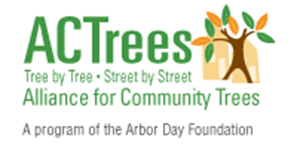
Alliance for Community Trees: Arborist Weighs in on Dallas Tree Ordinance Rewrite

Sustainable versus unsustainable development; are these trees sustainable? Picture by Alliance for Community Trees.
 Treebune News
Treebune News

Republished January 18, 2016 by several sources, Originally Published January 14, 2016 By STEVE HOUSER
Dallas, TX (January 14, 2016) — Steve Houser, a consulting arborist and past chairman of the Dallas Urban Forest Advisory Committee, pens an editorial on balancing ecology and economy in a rewrite of the Dallas tree ordinance. Over 20 years ago, the value of a tree in Dallas was set at about $100 per diameter inch. Today, Houston values its trees at $240 per diameter inch. Houser breaks down what this means for “sustainable” vs. “unsustainable development. Here’s his editorial.
Deliberations regarding the Dallas tree ordinance will soon be finalized by the Zoning Ordinance Committee, and the resulting changes forwarded to the City Plan Commission and City Council. Why are the revisions in the tree ordinance important? The revised ordinance will affect the cost of development and our future quality of life.
A prosperous economy can coexist with a healthy environment, but to achieve a balance requires an informed public and the collective will to change how we grow in the future. Should any increased cost of development outweigh today’s quality of the air, water, and soil — and the city we leave for our children?
Education is critical in stimulating public awareness of future growth and its potential negative effects. The Dallas/Fort Worth regional population is expected to double by 2050, and our best hope is that the public conscience will ultimately drive us to build more responsible and balanced developments. This requires city codes geared toward more than just the cost of development. We can make positive changes in the way we build this city, but it requires an informed and involved public working to find answers for the common good.
Vision North Texas is a public, private, and academic partnership created to serve as a forum for dialogue and action on issues related to growth. Regional planning efforts show the many negative effects of developing our communities under the continued “business as usual” or urban-sprawl scenario. We all must fully understand the important role that trees and healthy urban ecosystems play in providing a sustainable urban infrastructure for our future. A healthy forest equals a healthy community.
The term “sustainability” relates to our ability to use natural resources without negatively affecting future generations’ ability to use the same resources. A fully sustainable development alters the built project to fit the site rather than altering the site to fit the built project. Thus, a big-box development planned for a forested site is not sustainable, nor is it a viable test-case scenario for alterations to the tree ordinance.
Unsustainable development might be less costly, but the future costs are measured in your ability to breathe clean air, drink clean water, or your time spent fighting increased traffic. Would you spend a little more for a sustainable house or building knowing that to do otherwise would contribute to more social and ecological problems?
Over 20 years ago, the value of a tree in Dallas (for tree ordinance mitigation purposes) was set at about $100 per diameter inch. Today, Houston values its trees at $240 per diameter inch, and the price increases up to $535 per diameter inch for trees over 13 inches. Flower Mound is at $250 per diameter inch, while Fort Worth and Austin are at $200. Dallas officials fear raising the value because of the potential negative effect on development. Since Flower Mound has a booming economy, higher tree values clearly have no negative effect. Any argument that higher tree values will slow development projects is doubtful at best.
“Trash trees” such as native juniper, mesquite and hackberry, provide a host of benefits, even if they have less-desirable landscape traits. Such trees with shorter life spans can survive Texas weather and play a very important role in natural forest succession as a forest progresses to a more mature stand of trees. There are three types of hackberry locally, and all three are top-rated for feeding wildlife. Even the lowly hackberry and its trash tree companions have an important role in our urban forest ecology.
Building sustainably might cost more short-term, but it is a wise investment that provides cleaner air and water, plus a better quality of life in the long-term. Let’s “keep the dirt flying” but in a reasonable, responsible and sustainable way.
